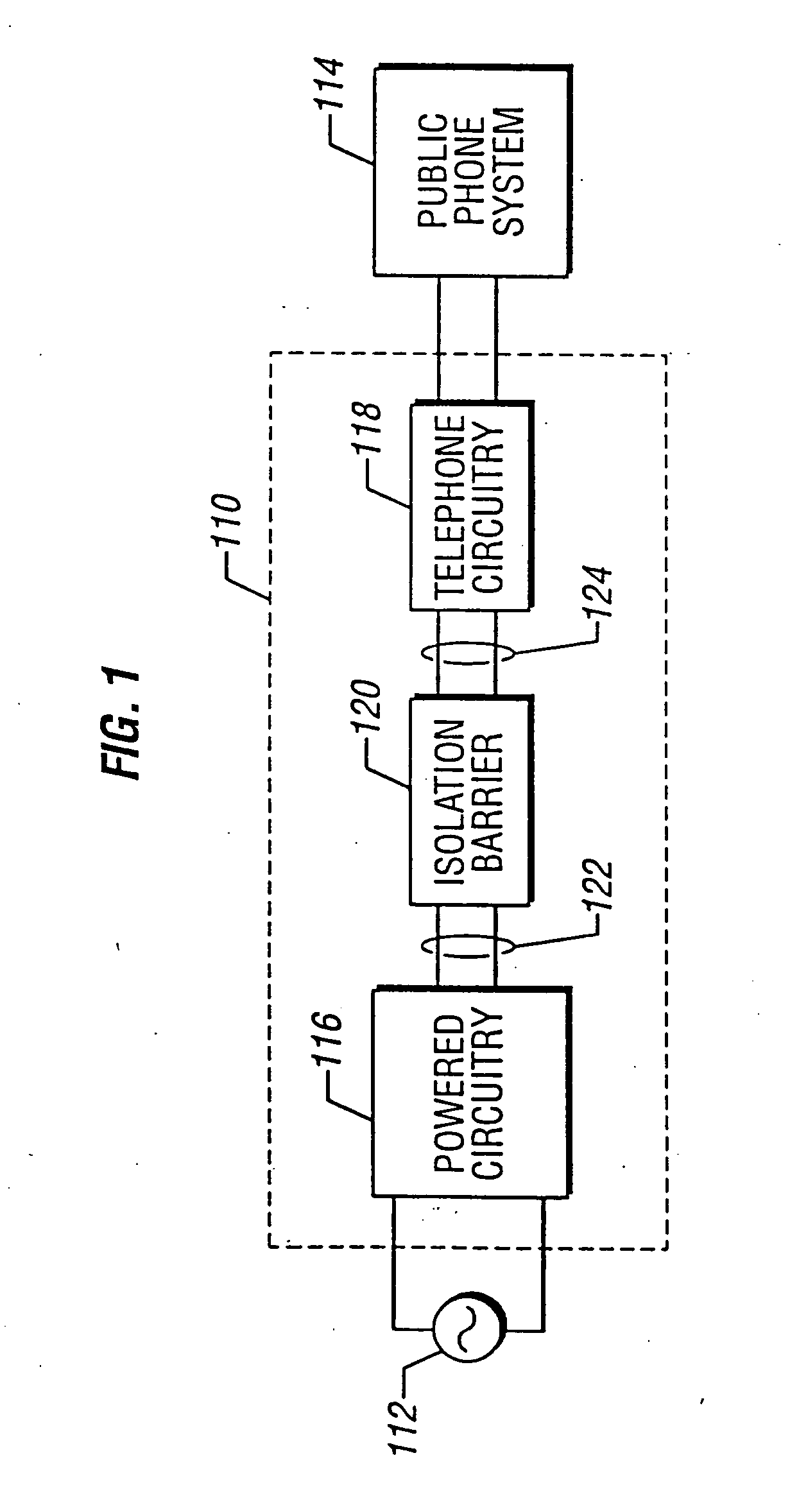Direct digital access arrangement circuitry and method for connecting DSL circuitry to phone lines
a technology of direct digital access and circuitry, applied in the field of isolation systems, can solve the problems of low frequency bandwidth limitations of analog signal communication through a transformer, cost disadvantage, and transformer size, weight and cost, and achieve the effect of reliable, accurate and inexpensiv
- Summary
- Abstract
- Description
- Claims
- Application Information
AI Technical Summary
Benefits of technology
Problems solved by technology
Method used
Image
Examples
Embodiment Construction
[0038] In order to provide a context for understanding this description, FIG. 1 illustrates a typical application for the present invention: a telephone that includes circuitry powered by a source external to the phone system. A basic telephone circuit 118 is powered by the “battery” voltage that is provided by the public telephone system and does not have a separate power connection. Many modem phones 110, however, include radio (cordless), speakerphone, or answering machine features that require an external source of power 112, typically obtained by plugging the phone (or a power supply transformer / rectifier) into a typical 110-volt residential wall outlet. In order to protect public phone system 114 (and to comply with governmental regulations), it is necessary to isolate “powered circuitry”116 that is externally powered from “isolated circuitry”118 that is connected to the phone lines to prevent dangerous or destructive voltage or current levels from entering the phone system. (...
PUM
| Property | Measurement | Unit |
|---|---|---|
| voltage | aaaaa | aaaaa |
| capacitance | aaaaa | aaaaa |
| powers | aaaaa | aaaaa |
Abstract
Description
Claims
Application Information
 Login to View More
Login to View More - R&D
- Intellectual Property
- Life Sciences
- Materials
- Tech Scout
- Unparalleled Data Quality
- Higher Quality Content
- 60% Fewer Hallucinations
Browse by: Latest US Patents, China's latest patents, Technical Efficacy Thesaurus, Application Domain, Technology Topic, Popular Technical Reports.
© 2025 PatSnap. All rights reserved.Legal|Privacy policy|Modern Slavery Act Transparency Statement|Sitemap|About US| Contact US: help@patsnap.com



